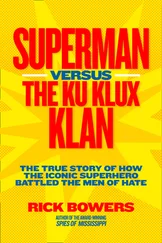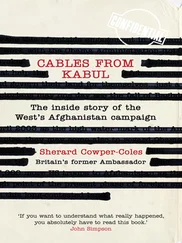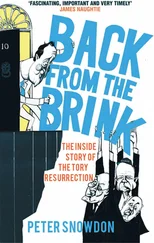Andrew Sorkin - Too Big to Fail - The Inside Story of How Wall Street and Washington Fought to Save the FinancialSystem--and Themselves
Здесь есть возможность читать онлайн «Andrew Sorkin - Too Big to Fail - The Inside Story of How Wall Street and Washington Fought to Save the FinancialSystem--and Themselves» весь текст электронной книги совершенно бесплатно (целиком полную версию без сокращений). В некоторых случаях можно слушать аудио, скачать через торрент в формате fb2 и присутствует краткое содержание. Жанр: Старинная литература, на английском языке. Описание произведения, (предисловие) а так же отзывы посетителей доступны на портале библиотеки ЛибКат.
- Название:Too Big to Fail: The Inside Story of How Wall Street and Washington Fought to Save the FinancialSystem--and Themselves
- Автор:
- Жанр:
- Год:неизвестен
- ISBN:нет данных
- Рейтинг книги:4 / 5. Голосов: 1
-
Избранное:Добавить в избранное
- Отзывы:
-
Ваша оценка:
- 80
- 1
- 2
- 3
- 4
- 5
Too Big to Fail: The Inside Story of How Wall Street and Washington Fought to Save the FinancialSystem--and Themselves: краткое содержание, описание и аннотация
Предлагаем к чтению аннотацию, описание, краткое содержание или предисловие (зависит от того, что написал сам автор книги «Too Big to Fail: The Inside Story of How Wall Street and Washington Fought to Save the FinancialSystem--and Themselves»). Если вы не нашли необходимую информацию о книге — напишите в комментариях, мы постараемся отыскать её.
Too Big to Fail: The Inside Story of How Wall Street and Washington Fought to Save the FinancialSystem--and Themselves — читать онлайн бесплатно полную книгу (весь текст) целиком
Ниже представлен текст книги, разбитый по страницам. Система сохранения места последней прочитанной страницы, позволяет с удобством читать онлайн бесплатно книгу «Too Big to Fail: The Inside Story of How Wall Street and Washington Fought to Save the FinancialSystem--and Themselves», без необходимости каждый раз заново искать на чём Вы остановились. Поставьте закладку, и сможете в любой момент перейти на страницу, на которой закончили чтение.
Интервал:
Закладка:
Seeing that the conversation was quickly devolving, Miller jumped in and asked again why this measure was necessary.
“We’ve listened to your comments and we have concluded that our decision is correct, and we don’t have to discuss this any further,” Baxter said.
Miller still persisted. “You are asking this company to make a very momentous decision. It is entitled to all the information it can get.”
“You’re not going to get that information,” Baxter replied.
Alan Beller interrupted to say, “Look, we will have a series of releases that we are fairly confident will calm the markets tomorrow.”
“I’m sorry,” Miller responded sardonically, “you’re talking to me about press releases ?”
At that the meeting was brought to a close.

Greg Fleming saw Peter Kelly in the hallway at Wachtell Lipton and gave him a big bear hug. As he did, he whispered into Kelly’s ear: “It’s done. Twenty-nine dollars. You owe me a beer,” he said with a big smile.
Fleming had just gotten off the phone with Thain, who had given him the green light to go ahead with the deal at $29 a share.
After an afternoon of haggling with Greg Curl, Fleming had persuaded him not only to accept the agreement but to fund Merrill’s bonus pool, up to the amount paid out in 2007. Nobody would get an employment contract, including Fleming and Thain—a point that Curl admired. To ensure that the deal would be completed, Fleming had convinced Curl to agree to a virtually airtight MAC agreement—meaning that even if Merrill’s business continued to deteriorate, Bank of America couldn’t later wiggle out of the transaction by claiming a “material adverse change” had occurred.
By Curl’s thinking, as he explained to Ken Lewis before agreeing to the price, “We might be able to get it for cheaper later, but if we don’t do the deal today, we could lose the opportunity entirely.” For Curl, a journey-man dealmaker, this was his crowning achievement.
Bank of America scheduled a board call for 5:00 p.m., while Merrill set up a board meeting at the St. Regis hotel at 6:00 p.m. to approve the deal. In a matter of hours, Merrill Lynch, with a history of nearly one hundred years as one of the most storied names on Wall Street, would be sold to Bank of America for the biggest premium in the history of banking mergers. It was, as one newspaper later put it, as if Wal-Mart were buying Tiffany’s.

At the NY Fed the banks had just finished trying to unwind their Lehman positions, an effort that had not gone particularly well. The Fed had passed out a memo to the CEOs earlier in the day explaining the program, which would be an extraordinary two-hour trading session in New York and London, during which firms that had opposing trades with Lehman tried to pair up and cut out the middleman.
The process was based on the assumption that Lehman was going under: “All trades conducted will be done on a contingency basis, contingent on the filing of bankruptcy of the Lehman parent,” the Fed memo said. “Trades will ‘knock in’ if the Lehman Brothers Holding Inc. files for bankruptcy before 9am ET on Monday.” The memo was intentionally never distributed to anyone at Lehman.
However neatly laid out the Fed proposal might have been, the various banks struggled to find matching trades that could remove Lehman from the picture. When frustrated traders left their desks at 4:00 p.m. in New York, many of them faced as much exposure to Lehman as they had on Friday afternoon.
“The extraordinary trading session held today to facilitate a partial unwind of these positions saw very little trading—perhaps $1 billion total—but at much wider spread levels for corporate bonds,” Bill Gross, head of PIMCO, told reporters that afternoon. “It appears that Lehman will file for bankruptcy and the risk of an immediate tsunami is related to the unwind of derivative and swap-related positions worldwide in the dealer, hedge fund, and buy-side universe.”
Word was also starting to spread that Merrill was about to be sold to Bank of America, a rumor that Gross, one of the nation’s most respected investors, said that he heavily discounted. “To some extent, the rumored bid for Merrill by Bank of America lends some confidence to all markets, although I am skeptical that BofA would pay such a premium on such short notice,” he said.
Ruth Porat, a Morgan Stanley banker who was present at the Fed, also doubted the speculation, especially the price. She called Jonathan Pruzan, Morgan Stanley’s banking industry expert, to tell him the latest buzz.
“The rumor is $29 a share, and it’s going to get announced in the morning,” she told him. “I can’t believe it, because they didn’t have time to do due diligence. It’s an absurd price.”
Without missing a beat, Pruzan replied, “Then it’s absolutely Ken. It’s true. That’s what Ken does.”

“Are you getting all this?”
Gary Lynch, the chief legal officer of Morgan Stanley, was barking into the phone as Paul Calello, the chief executive of Credit Suisse’s investment bank, paced nearby. With no access to a computer at the New York Fed, Lynch was in the process of dictating the text of an important press release to Jeanmarie McFadden, a Morgan Stanley spokeswoman, who was typing frantically to keep up.
The plan was to let the markets know that while Lehman might fail, Wall Street banks were cooperating to keep the whole financial system from imploding.
The release would open: “Today, a group of global commercial and investment banks initiated a series of actions to help enhance liquidity and mitigate the unprecedented volatility and other challenges affecting global equity and debt markets.”
It would go on to say that the world’s biggest financial institutions were creating a $100 billion borrowing facility for themselves—over and above what the Federal Reserve was providing through its Primary Dealer Credit Facility. Any one bank would be able to borrow up to $35 billion from the pool.
So far, ten banks were lined up to provide $7 billion each, for a total of $70 billion. The individual banks were a Who’s Who of the global financial system: Goldman Sachs, Merrill Lynch, Morgan Stanley, Bank of America, Citigroup, JP Morgan, Bank of New York, UBS, Credit Suisse, Deutsche Bank, and Barclays. In normal times, many of them were the fiercest of rivals.
The press release ended by stating assuredly that “the industry is doing everything it can to provide additional liquidity and assurance to our capital markets and banking system.”

Panic was starting to build within the Lehman ranks. George H. Walker IV, head of the firm’s investment management unit, sat in his office at 399 Park Avenue, scrambling to find a way to save the division. He had received bids for it on Friday from two separate private-equity firms, Bain Capital and TPG, and was in the middle of trying to bring them together when he received a telephone call from Eric Felder, one of McDade’s traders.
Felder was talking so fast that it sounded as if he were hyperventilating.
Читать дальшеИнтервал:
Закладка:
Похожие книги на «Too Big to Fail: The Inside Story of How Wall Street and Washington Fought to Save the FinancialSystem--and Themselves»
Представляем Вашему вниманию похожие книги на «Too Big to Fail: The Inside Story of How Wall Street and Washington Fought to Save the FinancialSystem--and Themselves» списком для выбора. Мы отобрали схожую по названию и смыслу литературу в надежде предоставить читателям больше вариантов отыскать новые, интересные, ещё непрочитанные произведения.
Обсуждение, отзывы о книге «Too Big to Fail: The Inside Story of How Wall Street and Washington Fought to Save the FinancialSystem--and Themselves» и просто собственные мнения читателей. Оставьте ваши комментарии, напишите, что Вы думаете о произведении, его смысле или главных героях. Укажите что конкретно понравилось, а что нет, и почему Вы так считаете.












